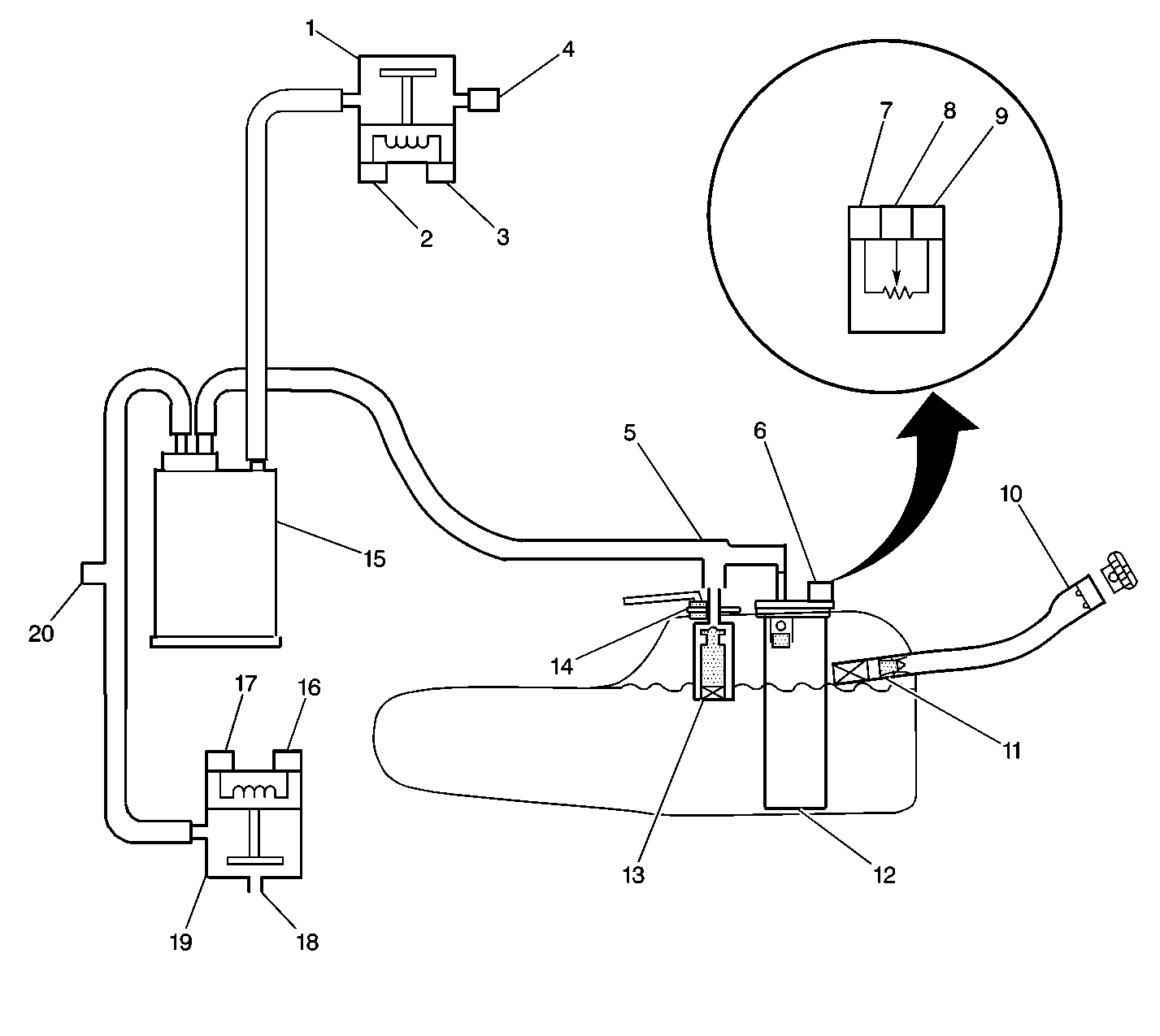| Table 1: | DTC P1441 |
Refer to
EVAP Control System Overview

System Description
This DTC tests for undesired intake manifold vacuum flow to the evaporative emission (EVAP) system. The control module seals the EVAP system by commanding the EVAP canister purge valve Closed and the EVAP canister vent valve Closed. The control module monitors the fuel tank pressure (FTP) sensor to determine if a vacuum is being drawn on the EVAP system. If vacuum in the EVAP system is more than a predetermined value within a predetermined time, this DTC sets.
The following table illustrates the relationship between the ON and OFF states, and the Open or Closed states of the EVAP canister purge and vent valves.
Control Module Command | EVAP Canister Purge Valve | EVAP Canister Vent Valve |
|---|---|---|
ON | Open | Closed |
OFF | Closed | Open |
Conditions for Running the DTC
| • | DTCs P0107, P0108, P0112, P0113, P0116, P0117, P0118, P0121, P0122, P0123, P0125, P0440, P0442, P0443, P0446, P0449, P0452, P0453, P1106, P1107, P1112, P1114, P1115, P1121, or P1122 are not set. |
| • | The ignition voltage is between 10-18 volts. |
| • | The start-up engine coolant temperature (ECT) is between 4-30°C (39-86°F). |
| • | The start-up idle air temperature (IAT) is between 4-30°C (39-86°F). |
| • | The start up ECT and IAT are within 9°C (16°F). |
| • | The fuel tank level is between 15-85 percent. |
| • | The barometric pressure (BARO) is more than 75 kPa (10.8 psi). |
| • | The vehicle speed sensor (VSS) is less than 120 km/h (75 mph). |
Conditions for Setting the DTC
The PCM detects vacuum during a non-purge condition.
Action Taken When the DTC Sets
| • | The control module will illuminate the malfunction indicator lamp (MIL) during the second consecutive trip in which the diagnostic test ran and failed. |
| • | The control module will store conditions which were present when the DTC set as Freeze Frame/Failure Records data. |
Conditions for Clearing the MIL/DTC
| • | The control module will turn OFF the MIL during the third consecutive trip in which the diagnostic ran and passed. |
| • | A history DTC clears after 40 consecutive warm-up cycles without a malfunction. |
| • | Use the scan tool in order to clear the DTC. |
Diagnostic Aids
An intermittent condition could be caused by an improperly installed or damaged EVAP canister purge valve or a temporary blockage in the EVAP canister purge valve. To repair a blockage in the EVAP system, refer to Evaporative Emission System Cleaning .
Test Description
The number below refers to the step number on the diagnostic table.
Step | Action | Values | Yes | No |
|---|---|---|---|---|
1 | Did you perform the Diagnostic System Check-Engine Controls? | -- | Go to Step 2 | |
2 | Are DTCs P0443, P0449, P0452, or P0453 also set? | -- | Go to Step 3 | |
3 |
Does the scan tool indicate FTP within the specified range? | -0.5 to +0.5 in H2O | Go to Step 4 | Go to DTC P0453 Fuel Tank Pressure Sensor Circuit High Voltage |
4 |
Does the gage indicate an increase in vacuum? | -- | Go to Step 5 | Go to Diagnostic Aids |
5 | Replace the EVAP canister purge valve. Refer to Evaporative Emission Canister Purge Solenoid Valve Replacement . Did you complete the replacement? | -- | Go to Step 6 | -- |
Does the scan tool indicate fuel tank pressure within the specified range? | -0.5 to +0.5 in H2O | Go to Steps 7 | Go to Step 3 | |
7 | With a scan tool, observe the stored information, Capture Info. Does the scan tool display any DTCs that you have not diagnosed? | -- | System OK |
